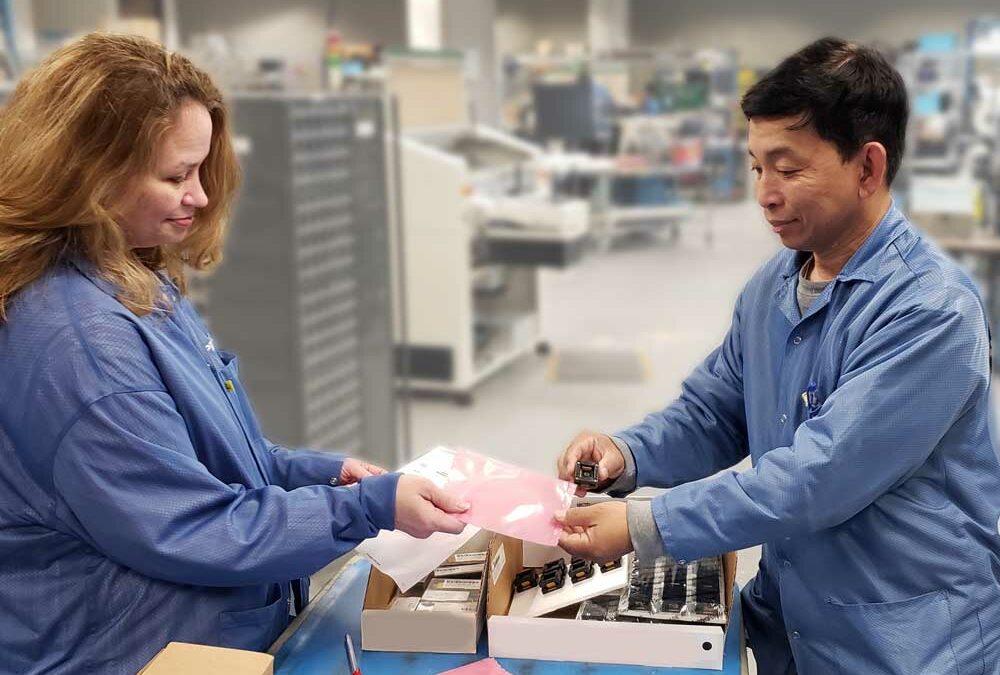One Year Later, Supply Chain Shortages Continue
Last year, BPM did a three-part series on the supply chain crisis (see links at the end of this article). Originally affecting automotive manufacturers, it soon spread like wildfire to other industries as manufacturers vied for the diminishing inventories of critical parts and components. Nowadays, everyone is aware of higher prices, longer turn-around times, and empty store shelves. The situation is a mess, and we may be dealing with this “new normal” for the foreseeable future.
BPM Supply Chain Update
BPM Microsystems is in the same boat, so to speak, as the rest of the world. They are dealing with some critical shortages that are affecting future delivery (more on that below); fortunately, BPM took the supply chain crisis seriously, and early. In addition, there are some built-in factors that have helped weather this storm. Here’s a list of the main ways BPM has gotten ahead of supply chain shortages:
- Builds/maintains inventory for critical components and spares
- Develops multiple suppliers rather than a single source
- Sources parts/materials from a variety of geographic regions, both domestic & international
- Has vertical manufacturing capability
- Controls design from top to bottom
- Utilizes common design architecture/software across multiple products
Here are some specifics.
Builds inventory
Automotive shortages started in the middle of 2020 as Covid-19 lockdowns were at their worst. BPM began to identify critical supplies and parts in the third quarter of 2020, updated inventory levels, and updated reorder thresholds. So far, only one programmer supply has been affected: the 1710 Manual Programmer. You can see updates on 1710 here. We currently have a small inventory available; to help in the short term, BPM has developed the 1710M (Military-spec version of 1710) that is available for delivery in the US only.
Multiple Suppliers, Multiple Geographical Sources
Identifying additional sources for critical inventory isn’t always easy, but it’s very important. Costs, minimum orders, and turn-around times vary, so it’s vital (when possible) to have options when it comes to parts. In the case of the 1710 programmer, it was a Microsemi FPGA that is only manufactured and distributed with a 52+ week lead-time. With all their other critical components, BPM was able to find suppliers.
BPM Distinctives
BPM has some “baked-in” manufacturing advantages, especially in light of the supply chain crisis. Vertical manufacturing: BPM’s manufacturing facility is located in their home office in Houston, Texas. They typically use generally available sourced components in their manufacturing process. Control design from top to bottom: All of BPM’s programmers and site technology is designed and manufactured on-site with globally-sourced parts. All of their designs and software are “locked-down” to ensure they cannot be reverse-engineered. This protects their intellectual properties. They also use common design architecture across multiple products, such as sites, sockets, and software. For instance, the 2900 Manual Programmer utilizes almost the same site technology as the 3901 and 3928 Automated Programmers (the only difference is the chassis and the stepper motors on the automated systems).
BPM Delivers
BPM continues to ship products in the face of the supply chain shortage. They utilize a first-in, first-out ordering process for back-ordered items; it is recommended to contact BPM in advance of your needed replacement or new product to ensure its timely delivery. In short, BPM is doing everything it can to deliver device programming solutions to you.
To find out more, please contact BPM email or by phone: +1 (713) 688-4600 | Sales Toll-Free: (855) SELL BPM | 24/7 Service: +1 (832) 617-5702.
See more supply chain articles:
- BPM Supply Chain Series, Part I: Programmable Device Shortage causes Auto Makers to Cut Output, Idle Plants (February 2021)
- BPM Supply Chain Series, Part II: Programmable Device Shortage Spreads to Consumer Electronics (February 2021)
- BPM Supply Chain Series, Part III: Why There is a Global Programmable Device Shortage (February 2021)
- Bring your mission-critical programming in-house for less than the cost of outsourcing AND maintain control of your IP
- Disaster Recovery for a Modern Manufacturing Operation
- Programming Devices— where no repairman has gone before
- Forbes– How The U.S. Must Modernize The Supply Chain Rather Than Putting Band-Aids On Old Infrastructure
